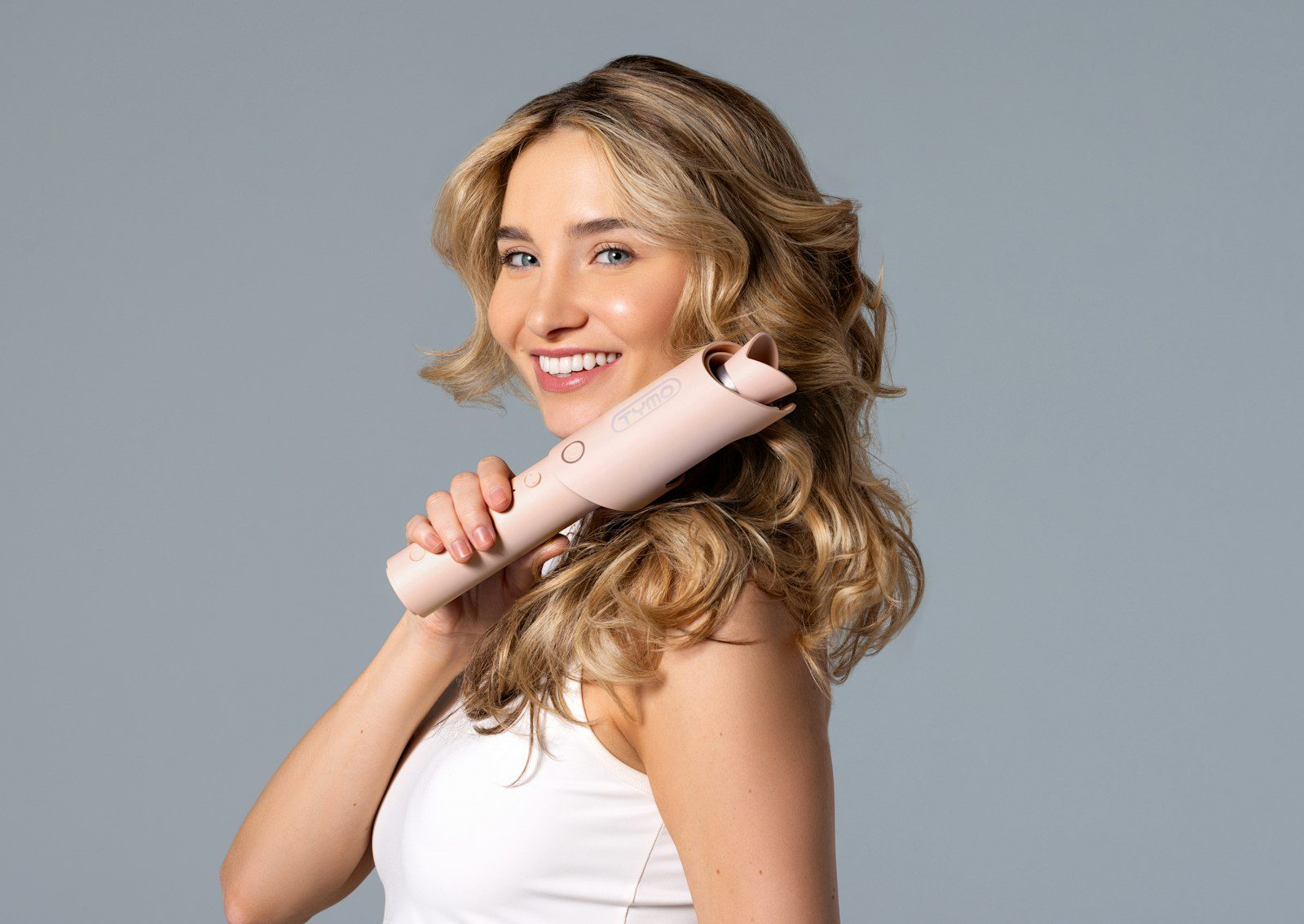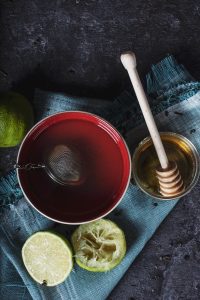Hair care is more than just a routine, it’s a revolution. From scalp to ends, every strand deserves attention. If you’ve been treating your hair without considering the foundation (your scalp), you may be missing the biggest key to healthy, lasting growth.

Understanding Your Hair and Scalp
Understanding your hair and scalp is essential for creating an effective hair care routine. Each hair type and scalp condition requires different care and products. Without this knowledge, hair struggles to thrive.
Determine your hair type first. Is it straight, wavy, curly, or coily? Assessing texture helps in choosing products that enhance hair’s natural beauty.
Equally important is knowing your scalp type. It can range from oily to dry or even sensitive. The scalp’s condition can affect overall hair health significantly.
The hair’s porosity—how well it absorbs moisture—is also crucial. Knowing your hair’s porosity guides you in selecting appropriate moisturizing products.
Remember, your scalp is the soil to your hair’s plant. A healthy scalp nurtures healthy hair growth and vitality.
Key Factors:
- Hair Type: Straight, wavy, curly, or coily.
- Scalp Type: Oily, dry, normal, or sensitive.
- Porosity: Low, medium, or high.

Building the Perfect Hair Care Routine
Building a perfect hair care routine starts with understanding personal hair needs. Catering to your specific hair type and concerns ensures better results. Consistency in following your routine is crucial for healthy hair.
Begin by assessing your hair’s current condition. Is it dry, damaged, or healthy? This evaluation directs your product choices effectively. Once determined, commit to a routine tailored to address these needs.
Keep a basic yet flexible structure. Adapt the routine as required by seasons or changes in hair health. Follow essential steps but don’t overwhelm yourself with products.
Crafting a routine involves incorporating several steps: cleansing, conditioning, detangling, moisturizing, and protecting. Each step plays a vital role in your hair’s health journey.
Key Components to Include:
- Cleansing: Remove dirt and buildup.
- Conditioning: Provide moisture and repair.
- Detangling: Minimize breakage.
- Moisturizing: Seal in hydration.
- Protecting: Prevent environmental damage.
Tailor these steps with quality products. Opt for those that match your hair goals and needs.

Step 1: Cleansing for a Healthy Foundation
Cleansing is the foundation of any hair care routine. Using the right shampoo can set the tone for healthy hair. A clean scalp fosters an ideal environment for growth.
Regular cleansing removes dirt, oils, and product buildup. This helps to maintain a healthy balance and prevents scalp issues. Avoid harsh shampoos that strip natural oils.
Choose a shampoo suited to your hair type. Sulfate-free options provide gentle cleansing for sensitive or dry hair.
For oily scalps, opt for clarifying shampoos occasionally. It prevents excessive buildup that can weigh hair down.
Shampoo Types:
- Sulfate-free: Gentle on sensitive hair.
- Clarifying: Use for deep cleaning.
- Moisturizing: Adds hydration to dry strands.
Cleansing should never be overlooked. It’s the first step to beautiful, healthy hair.

Step 2: Conditioning and Nourishing Your Strands
Conditioning is essential for replenishing moisture in hair. After cleansing, a good conditioner smooths and detangles strands. It also adds shine and protects against damage.
Use a conditioner formulated for your hair type. Look for hydrating ingredients such as aloe, argan oil, or shea butter. These components deeply nourish and strengthen hair.
Deep conditioning treatments offer intense hydration. Use them weekly for an added boost of moisture. This step is critical for those with dry or brittle hair.
Conditioning Tips:
- Focus on Ends: Apply mainly to hair ends.
- Leave-in Options: Use for ongoing hydration.
- Deep Condition: Weekly for intensive care.
Remember, conditioning is not a step to skip. It fortifies strands and retains essential moisture.

Step 3: Detangling Without Damage
Detangling is crucial but must be done carefully. Improper methods can lead to breakage and split ends. Start by using the right tools for the job.
A wide-tooth comb is ideal for wet hair. It gently removes tangles without pulling or snapping strands. Patience is key; start detangling from the bottom upwards.
Use detangling sprays or leave-in conditioners. These products add slip to hair, making combing easier.
Detangling Tools:
- Wide-tooth Comb: For gentle detangling.
- Detangling Spray: Reduces friction.
- Leave-in Conditioner: Adds moisture and ease.
Proper detangling ensures hair remains intact and damage-free.

Step 4: Moisturizing and Sealing in Hydration
Moisturizing is about maintaining hydration within your strands. Hair naturally loses moisture, so this step is crucial. Employ products that lock moisture in effectively.
Use a leave-in conditioner or hair oil. Natural options like coconut or jojoba are beneficial. They provide moisture and protection against external factors.
Sealing in hydration combats dryness and frizz. It enhances the smooth, sleek appearance of hair.
Moisture Locking Tips:
- Leave-in Conditioners: Continuous hydration.
- Hair Oils: Add gloss and moisture.
- Lock Method: Oil over damp hair.
Consistent moisturizing maintains elasticity and luster.

Step 5: Protecting and Styling Safely
Protection is key to healthy hair. Heat styling and environmental exposure can cause significant damage. Limit such exposure to ensure hair remains vibrant.
Use heat protectants with styling tools. They shield against high temperatures and reduce damage risk. Look for products with silicone and keratin.
Incorporate protective hairstyles. Options like loose buns or braids minimize tension and breakage.
Styling Safety Tips:
- Heat Protectants: Essential for hot tools.
- Minimal Heat: Avoid frequent heat styling.
- Protective Styles: Minimize wear and tear.
Protective measures ensure a long-term healthy appearance.

Step 6: Treatments for Targeted Hair Concerns
Address specific hair needs with targeted treatments. Hair masks, serums, or oils provide benefits where you need them most. Tailor these treatments according to your unique challenges.
For damaged hair, protein treatments strengthen and repair. They bolster hair structure and restore elasticity. Use these once a month for maximum effect.
For dryness, opt for hydrating masks. They offer deep moisture and replenish parched strands. Such treatments boost overall hair condition.
Treatment Focus:
- Protein Treatments: Strengthen hair.
- Hydrating Masks: Restore moisture.
- Scalp Treatments: Promote a healthy environment.
Tailored treatments transform hair, addressing individual concerns.

The Best Hair Products for Every Hair Type
Selecting the right products begins with understanding your hair type. Different textures have unique needs requiring specific care. Using products tailored to these specifications enhances effectiveness.
For fine hair, focus on lightweight formulations. Products that add volume without weight are ideal. Look for ingredients like keratin and biotin that strengthen without residue.
Curly hair thrives with moisture-rich products. Creams and gels with hydrating ingredients reduce frizz and define curls. Oils like argan and coconut provide an added layer of luster.
For thick or coarse hair, heavier creams offer needed nourishment. Butters like shea and cocoa absorb well, taming unruly strands. Consider products with anti-frizz properties to enhance manageability.
Recommended Products for Different Hair Types:
- Fine Hair: Volumizing mousse, lightweight conditioner.
- Curly Hair: Curl cream, hydrating gel.
- Thick Hair: Nourishing butter, anti-frizz serum.
Hydration remains crucial across all hair types. However, products should cater to specific concerns like split ends or dullness. Seek brands focusing on quality and proven results.
Key Ingredients to Look For:
- Keratin: Strengthens delicate hair.
- Shea Butter: Moisturizes and smooths coarse strands.
- Biotin: Promotes healthier, resilient hair.
Choosing products catering to distinct needs transforms hair health and appearance.

Essential Hair Care Tips for Lasting Health
Healthy hair depends on consistent care and attention. Simple changes in routine can yield remarkable results over time. Implement these tips into your daily regimen for improved hair vitality.
Scalp massages play a crucial role in stimulating growth. By promoting blood circulation, they nourish follicles naturally. Use your fingertips in gentle, circular motions regularly.
Avoid excessive washing to maintain natural oils. Over-washing strips hair, leading to dryness. Instead, wash hair every few days to preserve moisture.
Protect your hair from environmental factors. Wind, sun, and pollution can damage strands. Wear hats or use protective products to shield your hair.
Quick Tips for Everyday Hair Care:
- Use a silk pillowcase to prevent breakage.
- Trim ends regularly to avoid splits.
- Stay hydrated for a healthy scalp.
Embrace products with natural ingredients. Harsh chemicals weaken hair structure and should be avoided. Opt for sulfate-free shampoos for gentler cleansing.
Healthy lifestyle choices also impact hair health. Nutrition plays a key role, as a balanced diet supports strong hair from within.

Adapting Your Routine: Seasonal and Lifestyle Changes
Your hair care routine should evolve with the seasons. Different weather conditions require specific adjustments to keep hair healthy. During colder months, focus on hydration as the air is often dry.
In warmer months, sun protection becomes vital. Hair can be damaged by UV rays, causing dryness and breakage. Use UV-protectant sprays or wear a hat outdoors.
Lifestyle changes also impact your hair care needs. For example, if you start exercising more, your scalp might require more frequent cleaning due to sweat. Similarly, travel can expose your hair to diverse environments.
Key Adjustments for Different Conditions:
- Increase conditioning in winter
- Use UV protection in summer
- Adjust washing frequency with lifestyle changes
Remember to listen to your hair’s needs and adapt your routine accordingly. By staying attentive, you’ll ensure lasting hair health throughout the year.

Common Hair Care Mistakes to Avoid
Many fall into common traps when it comes to hair care. These errors can hinder your path to optimal hair health. Awareness and correction are key.
Over-washing is a frequent mistake, stripping hair of natural oils. This can lead to dryness and a brittle texture. Avoid using hot water as well, which further damages the hair shaft.
Another trap is neglecting regular trims. Split ends worsen and travel up the hair, making regular haircuts essential for maintaining healthy strands.
Mistakes to Watch For:
- Using too many products at once
- Neglecting regular trims
- Over-reliance on heat styling tools
Understanding these pitfalls helps maintain a healthy, vibrant mane. Adjusting your routine to avoid these missteps will greatly benefit your hair journey.

Embracing Your Hair Journey: Mindset and Motivation
Your hair journey is as unique as you are. Embrace it with patience and positivity, celebrating each step along the way. This mindset fosters a healthier relationship with your hair.
Motivation comes from seeing progress and setting realistic goals. Reflect on the small victories and changes you’ve achieved. Stay inspired by surrounding yourself with supportive influences, whether friends or online communities.
Tips for Staying Motivated:
- Set achievable hair goals
- Celebrate small wins
- Share your journey with others
Remember that hair care is not a race but a continuous journey. Keep a positive outlook and enjoy the process of nurturing your natural beauty.

Conclusion: Your Path to Ultimate Hair Health
Achieving the ultimate hair health is a rewarding journey of understanding and care. It involves dedication to your unique needs. By crafting a personalized hair care routine, you nurture both confidence and well-being.
Remember, every choice counts—whether it’s choosing the best hair products or adopting healthy hair care tips. Embrace this transformative journey with curiosity and mindfulness. In doing so, you’ll find not just healthier hair, but a deeper connection to your personal care journey.

